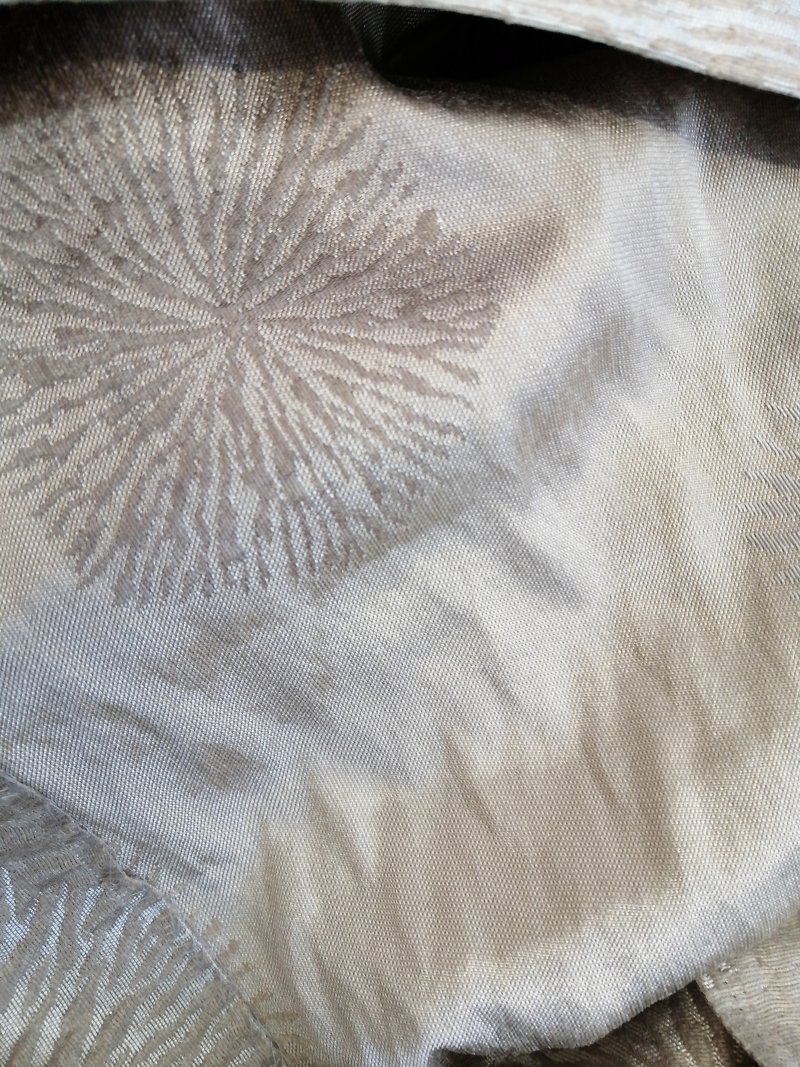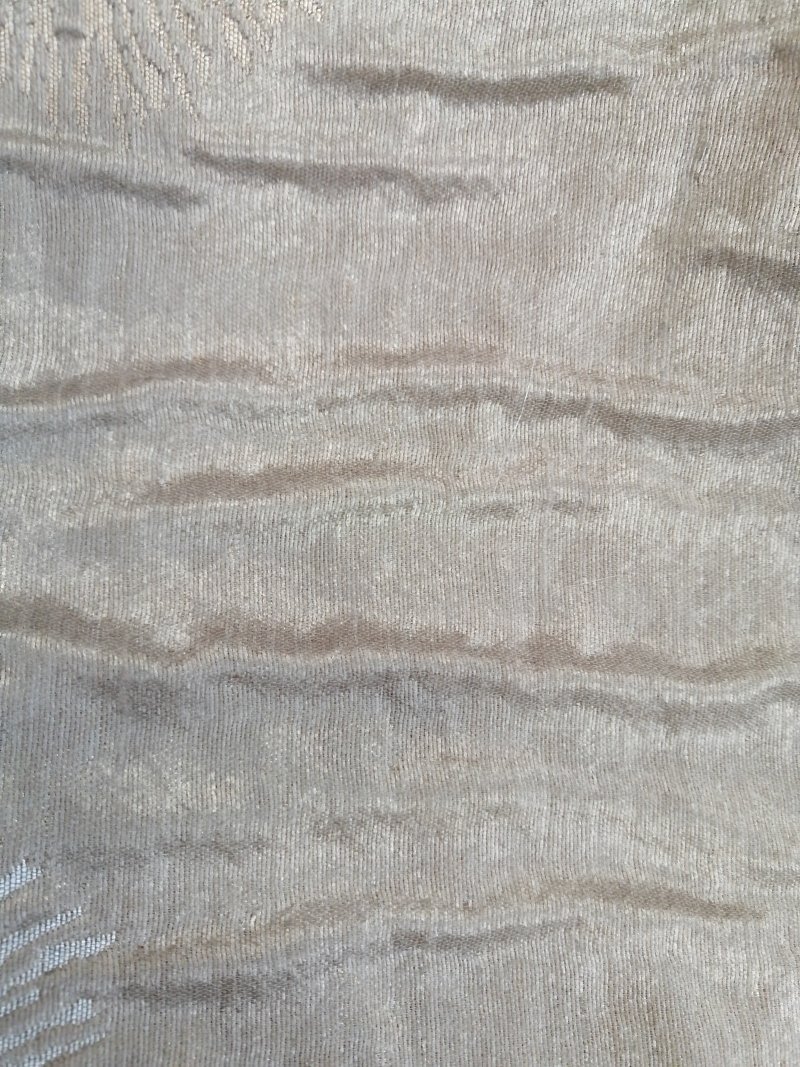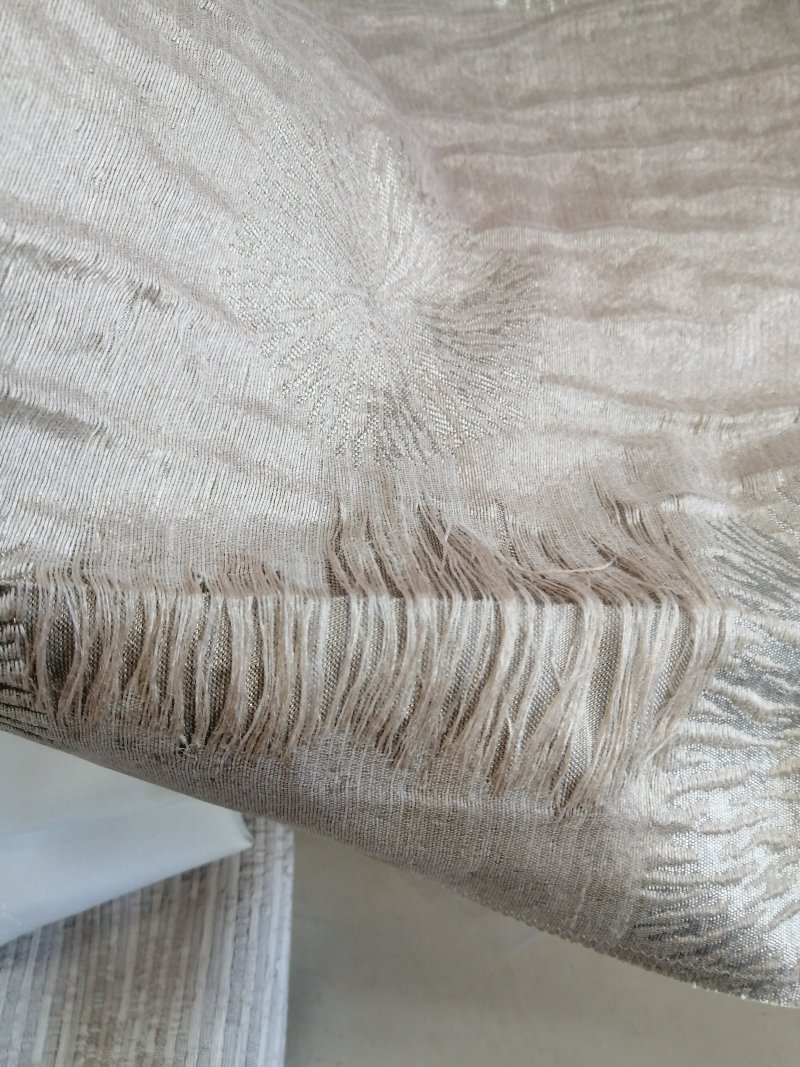See photos - What fibre is it in this curtain, and what do you think is the probable cause of the loose fibres
The fibre does not dissolve in sulphuric acid, formic acid or sodium hypochlorite. It shrinks quickly from flame but eventually will catch fire and burns quickly When extinguished there is a fairly hard, black bead.
Back of fabric

Front of Fabric

Problem

The fibre does not dissolve in sulphuric acid, formic acid or sodium hypochlorite. It shrinks quickly from flame but eventually will catch fire and burns quickly When extinguished there is a fairly hard, black bead.
Back of fabric

Front of Fabric

Problem


